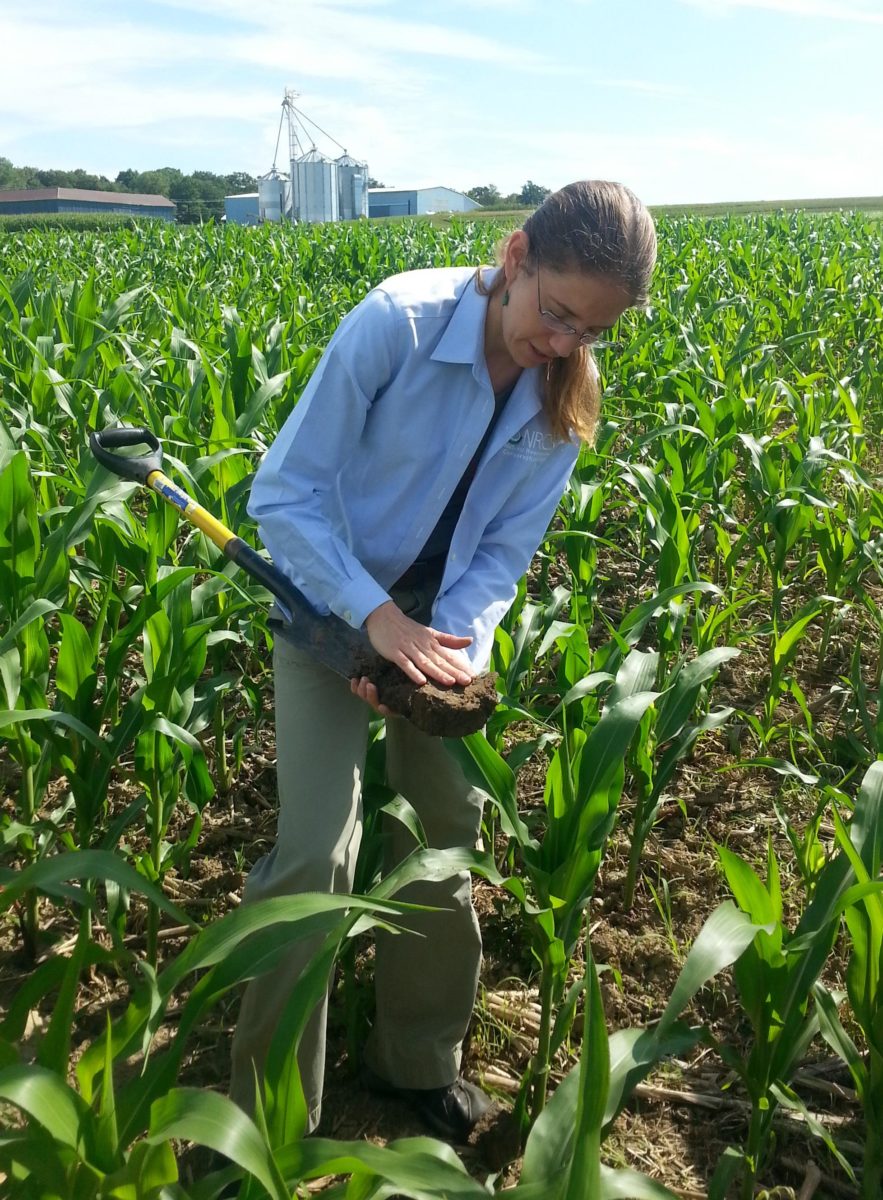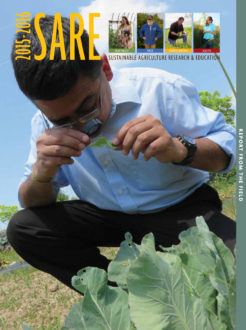SARE: ADVANCING SOIL HEALTH
The importance of soil health cannot be overstated. It supports vigorous plant growth by promoting the efficient use of nutrients and water, protecting against erosion and compaction, and aiding in disease and pest management. Soil health drives farm productivity and resilience against weather extremes.
But the soil is an incredibly complex environment, and for farmers to know how to improve their ground, they first need to learn about its condition.
That is why a multidisciplinary team from Cornell University created a new kind of soil assessment—with early funding from multiple SARE grants as well as other sources—and why interest in it is steadily growing, not just in the Northeast but across the country.

“The Cornell Assessment of Soil Health is really a framework that’s based on measuring a number of indicators of soil health—physical, chemical and biological—and then using that information to help farmers make management decisions,” says Harold van Es, a Cornell soil and water management professor.
Traditional soil tests, which are also important management tools, are typically limited to measuring nutrient levels and pH. They do not reveal anything about the physical structure or microbial life present in the soil, yet such characteristics strongly influence crop yields as well as the efficiency of inputs such as water and fertilizers. In contrast, Cornell’s soil health assessment reports typically include management recommendations to address specifically identified constraints and promote soil-building practices such as cover cropping, reduced tillage, the use of compost or manure, and diversified rotations that include perennial crops.
“As far as the soil health assessment, it’s really an eye opener. Quite an eye opener,” says Donn Branton, one of many New York farmers who collaborated with the researchers who developed it. A long-time no-tiller, Branton says he has a new appreciation for the role of soil biology in crop production, and is now using more mixed-species cover crops in his rotations.
The need for the assessment was born out of a survey of Northeastern farmers, many of whom used traditional soil tests but “felt there was something more going on with their soils,” says Bianca Moebius-Clune, director of the soil health division at USDA’s Natural Resources Conservation Service. “There were erosion issues, they had weed issues, they had decreasing yields even though they needed to irrigate more, put on more fertilizer, more pesticides. And they really didn’t have good diagnostic tools for all of these issues.”
Beginning in 2003, three SARE grants supported the assessment’s creation and early outreach efforts. The Cornell team identified the most meaningful soil health indicators to include, and worked with farmers like Branton to refine them through on-farm testing.
“That initial funding was critical,” van Es says. “What is also very nice about the SARE funding program is that it requires a fairly intense collaboration with farmers or consultants or Extension agents. And that really was very critical to making this project successful, because if you want this new technology to be adopted by farmers, you need to involve them in the development process right from the start.”
The Cornell lab handles about 2,000 soil samples each year, and the assessment is in “a rapid growth phase,” van Es says. The team is now collecting soil samples from across the country so that the assessment can be adapted for use at the national level.
For more information, see the project reports for grants LNE03-175, LNE06-235 and ENE09-110.
Free Resources!
Grantee product: The Cornell Soil Health Assessment (learn more about what is available).
SARE book: Building Soils for Better Crops (download for free or purchase hard copies).
Conduct topical searches of hundreds of educational resources, including soil health.
